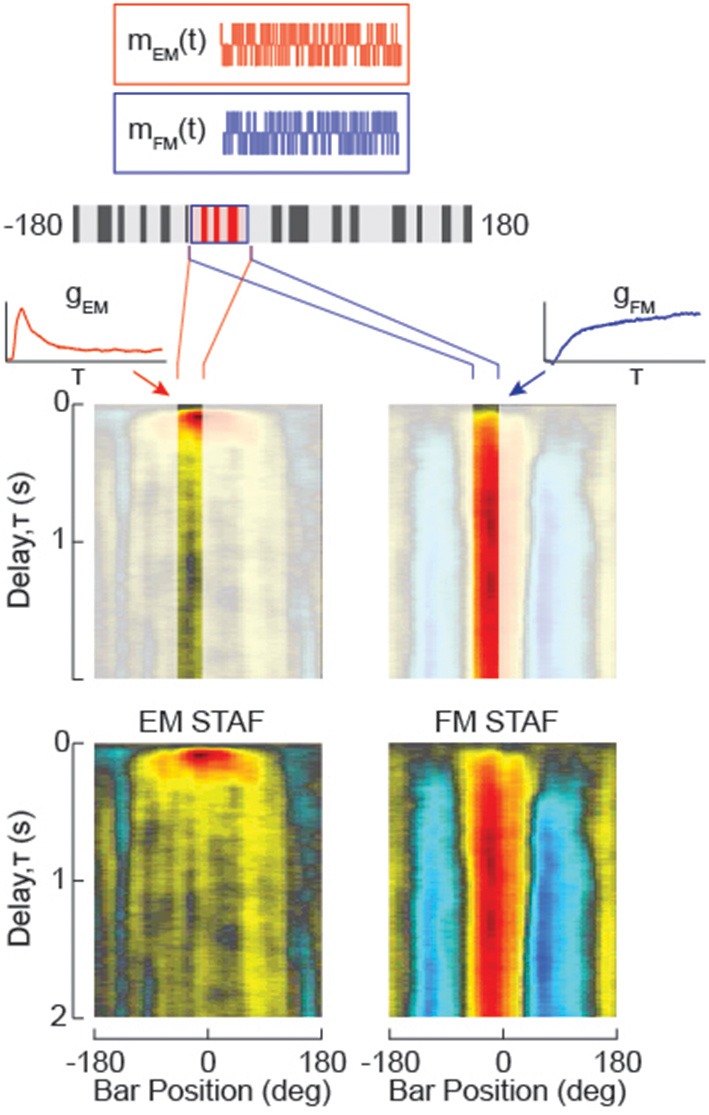Figure 2.

Dissociating Figure Motion (FM) from small-field Elementary Motion (sf-EM) and measuring the non-linear variation in the impulse response to the motion of each over space. Two m-sequences (m) are used to independently modulate the elementary motion of the small-field surface of the figure (sf-EM, red) and figure motion (FM, blue). FM in the absence of sf-EM would resemble a drift-balanced figure in which the figure “overwrites” the ground pattern with a new random texture, but generates no coherent motion signals. A property of the m-sequence is that the figure ends the trial displaced one pixel from its starting location, and the mean position is centered on the starting location. Cross-correlation of each of the two m-sequence signals with the difference of left and right wingbeat amplitude (ΔWBA) steering response data yields two impulse response estimates for the sf-EM stimulus (gEM(t)) and the FM stimulus (gFM(t)). By evenly sampling the visual azimuth of the LED display, the impulse response filters are concatenated into a function of space and time, a spatio-temporal action field (STAF) for the sf-EM and FM signals, respectively (at bottom). These functions are spatially smoothed with a four pixel boxcar.
